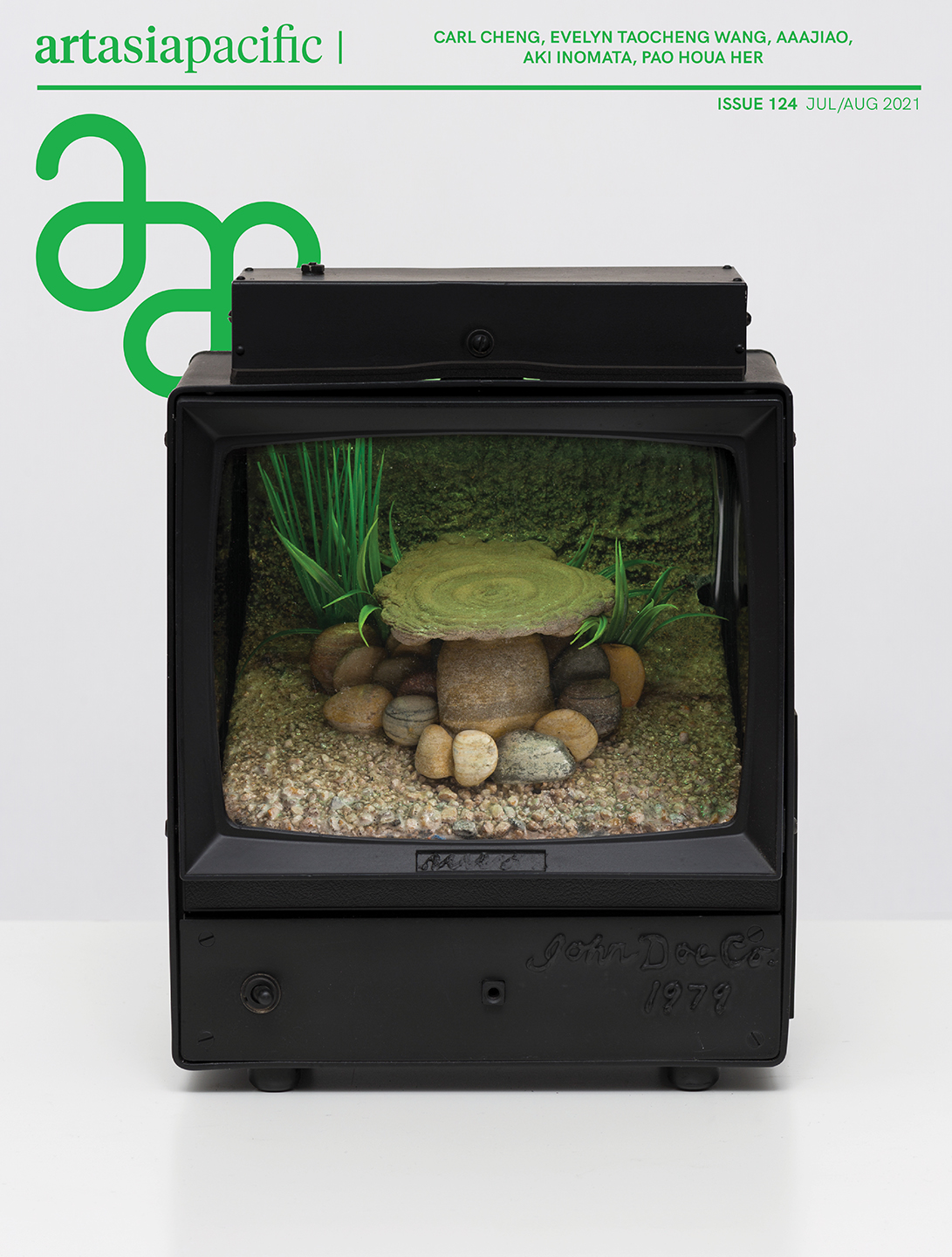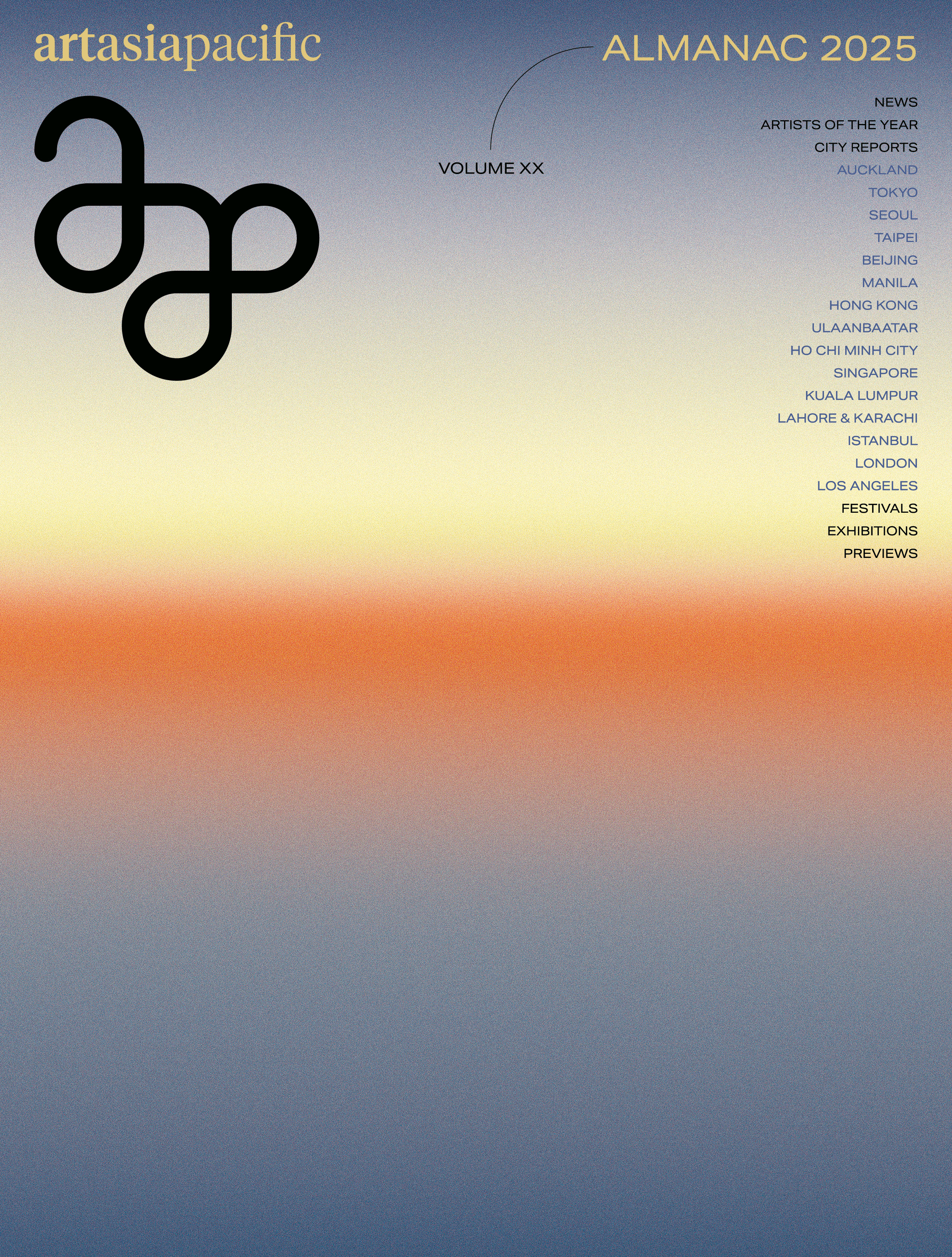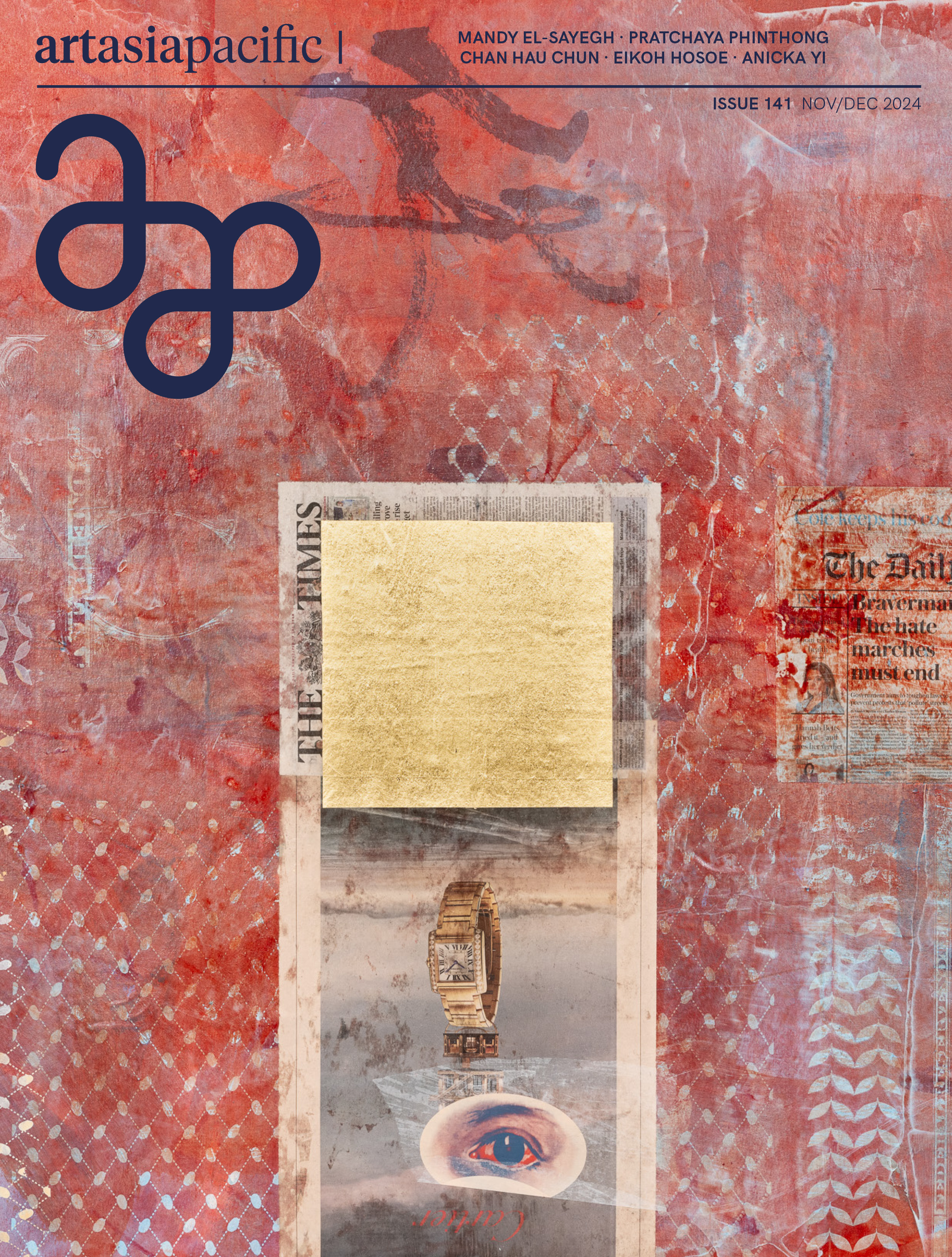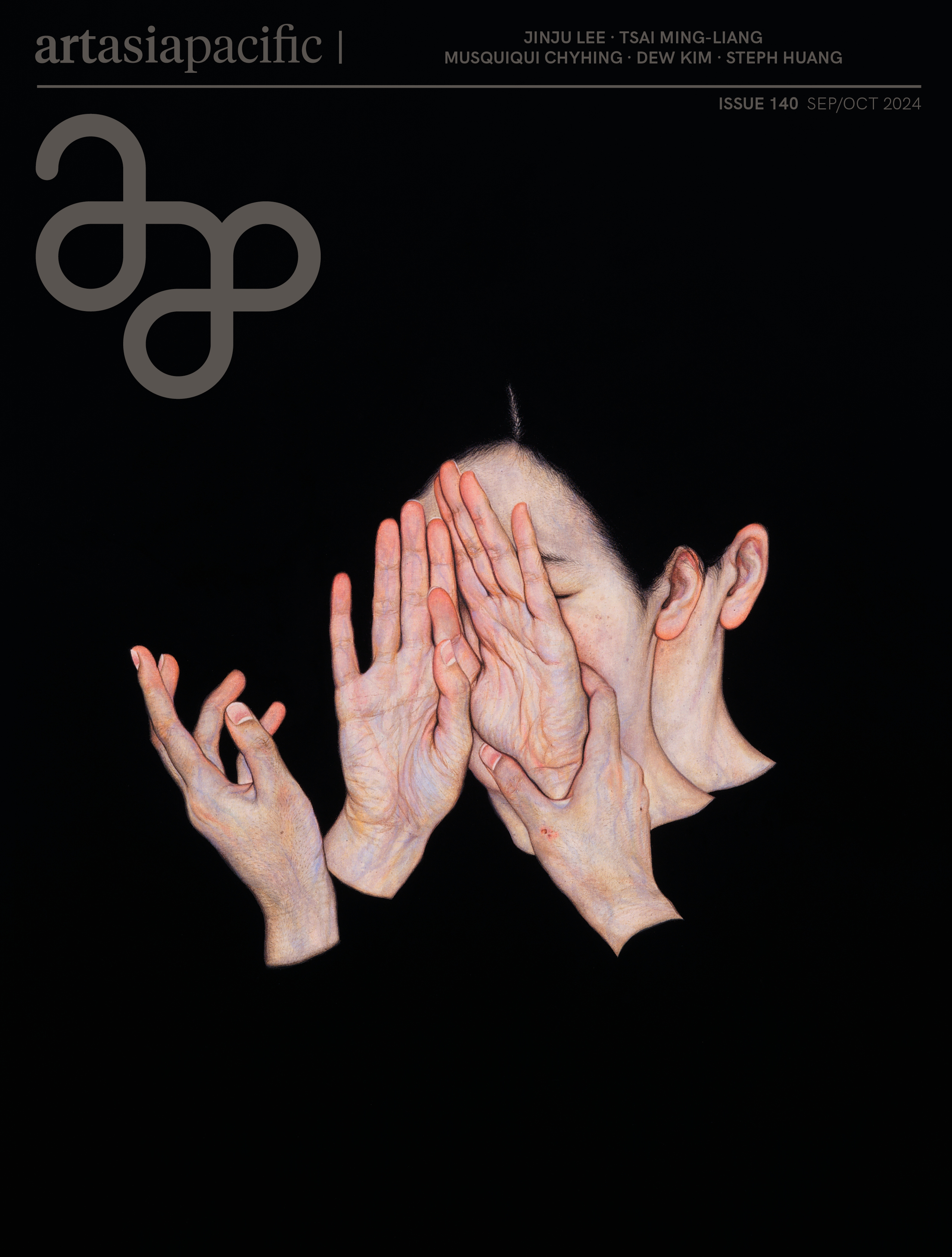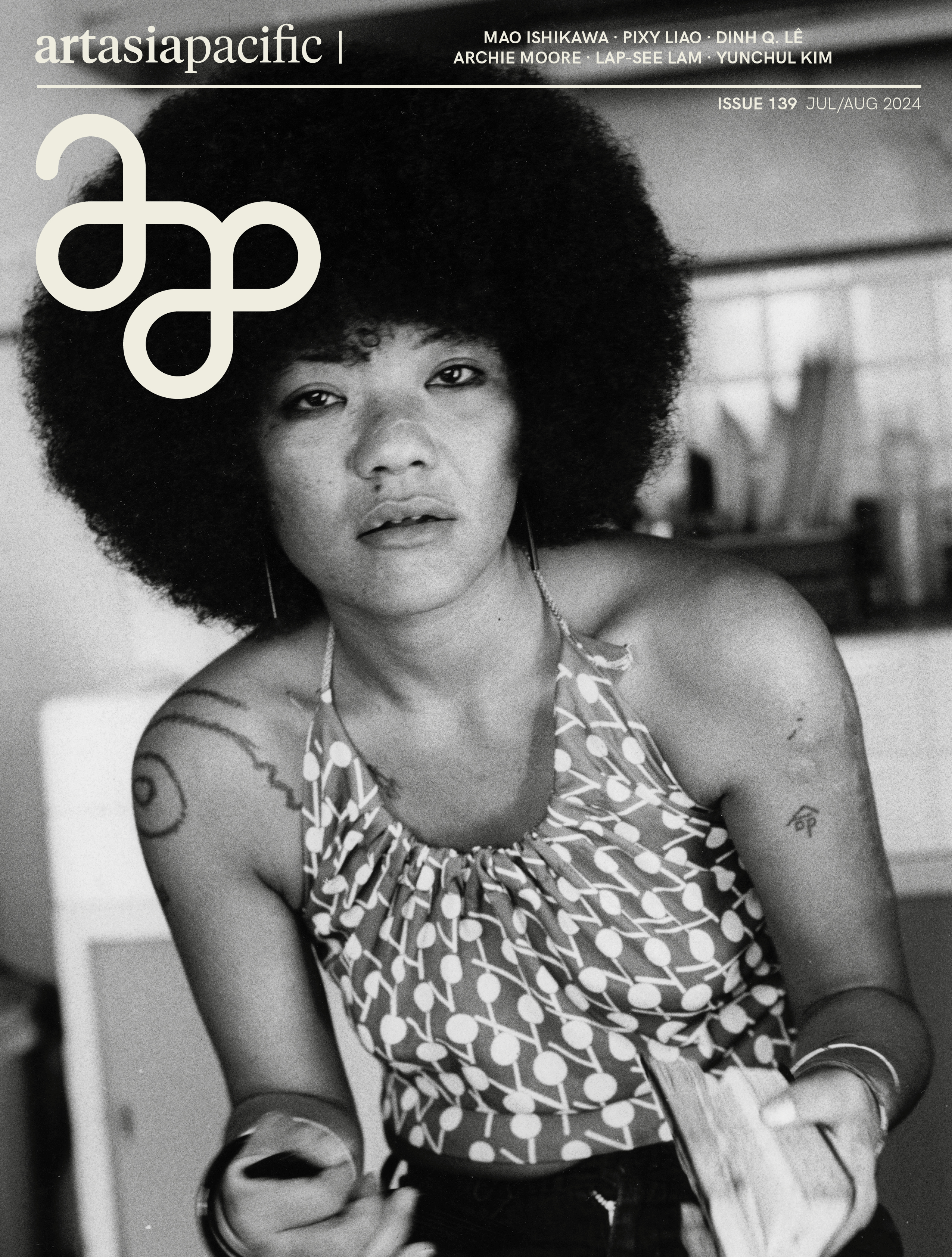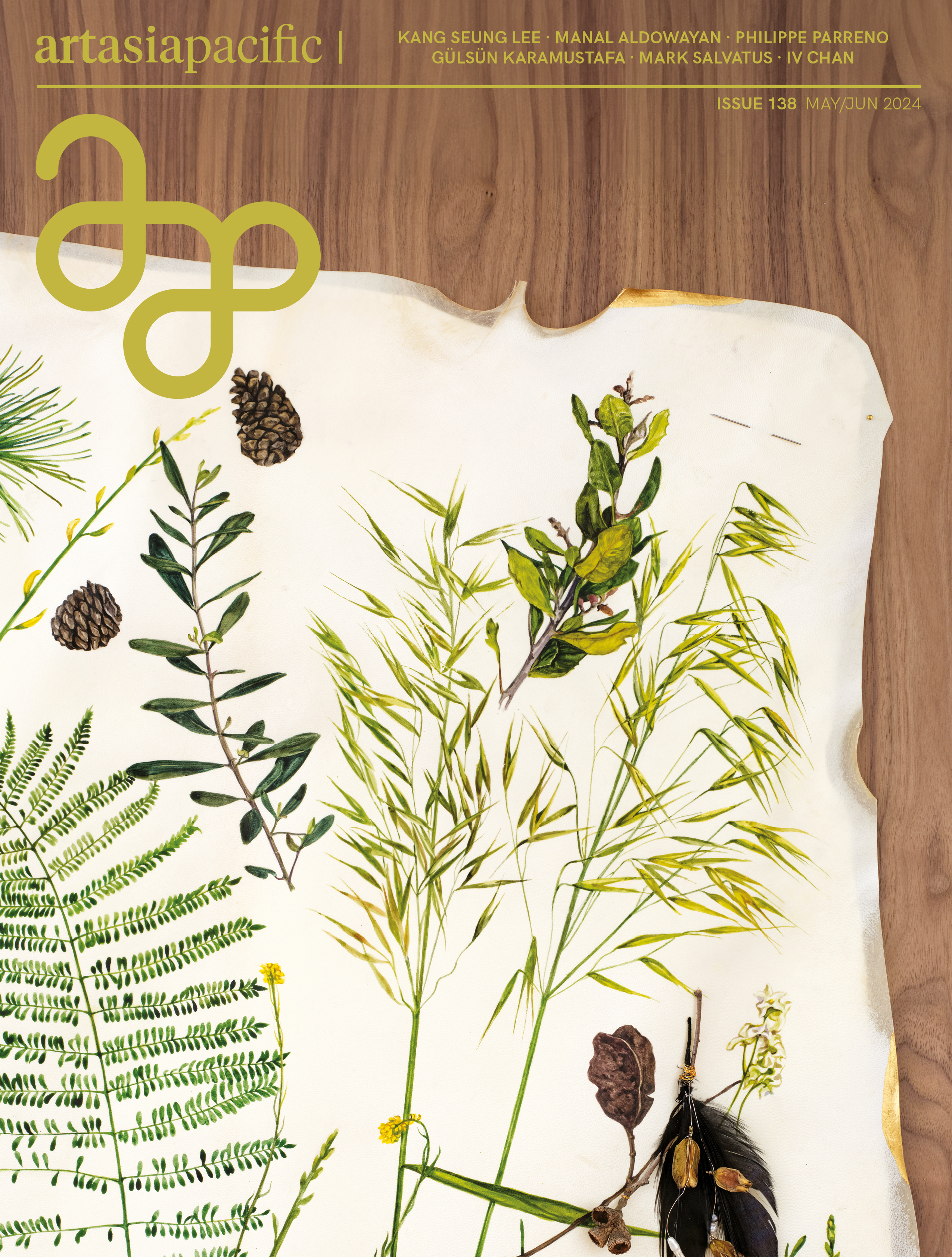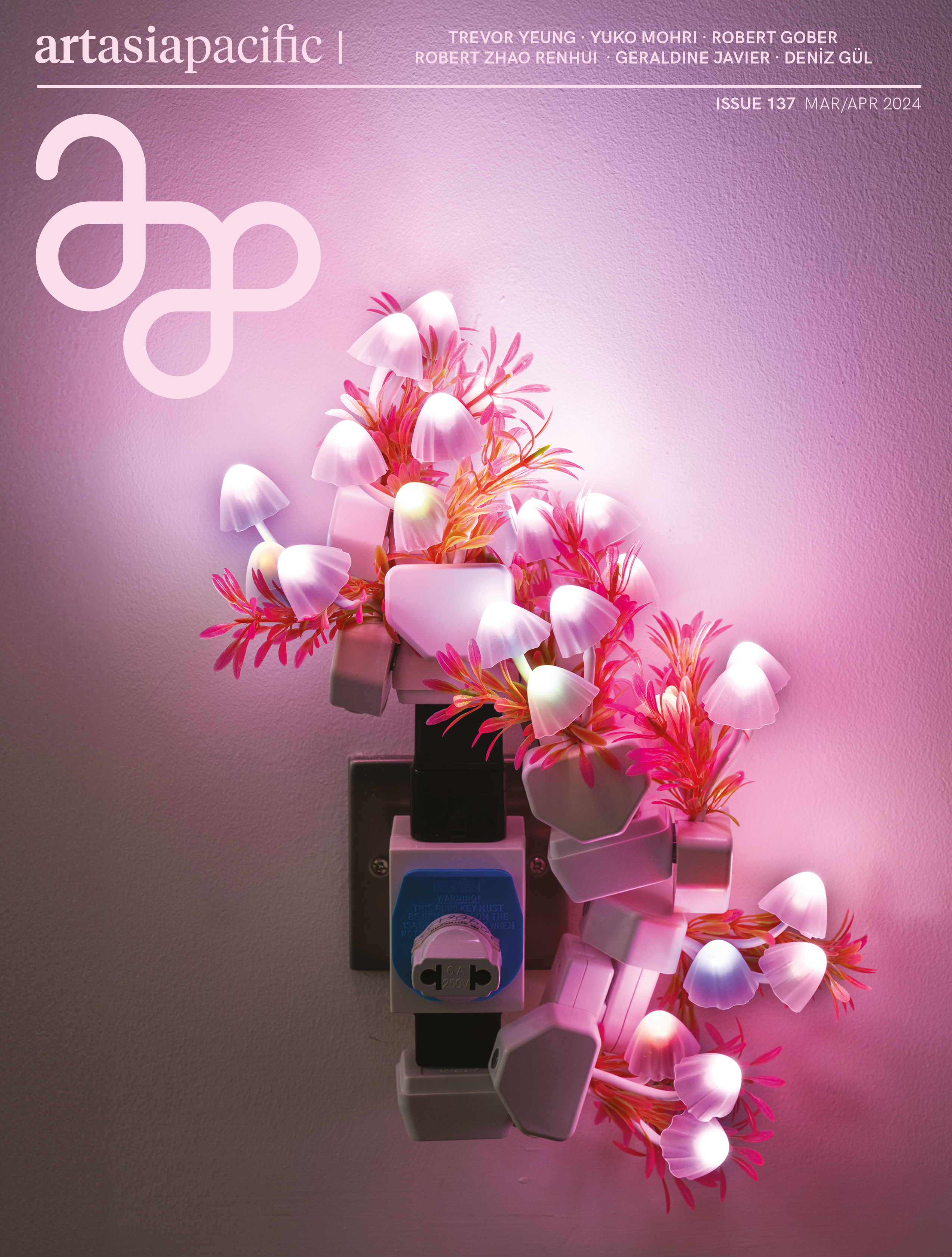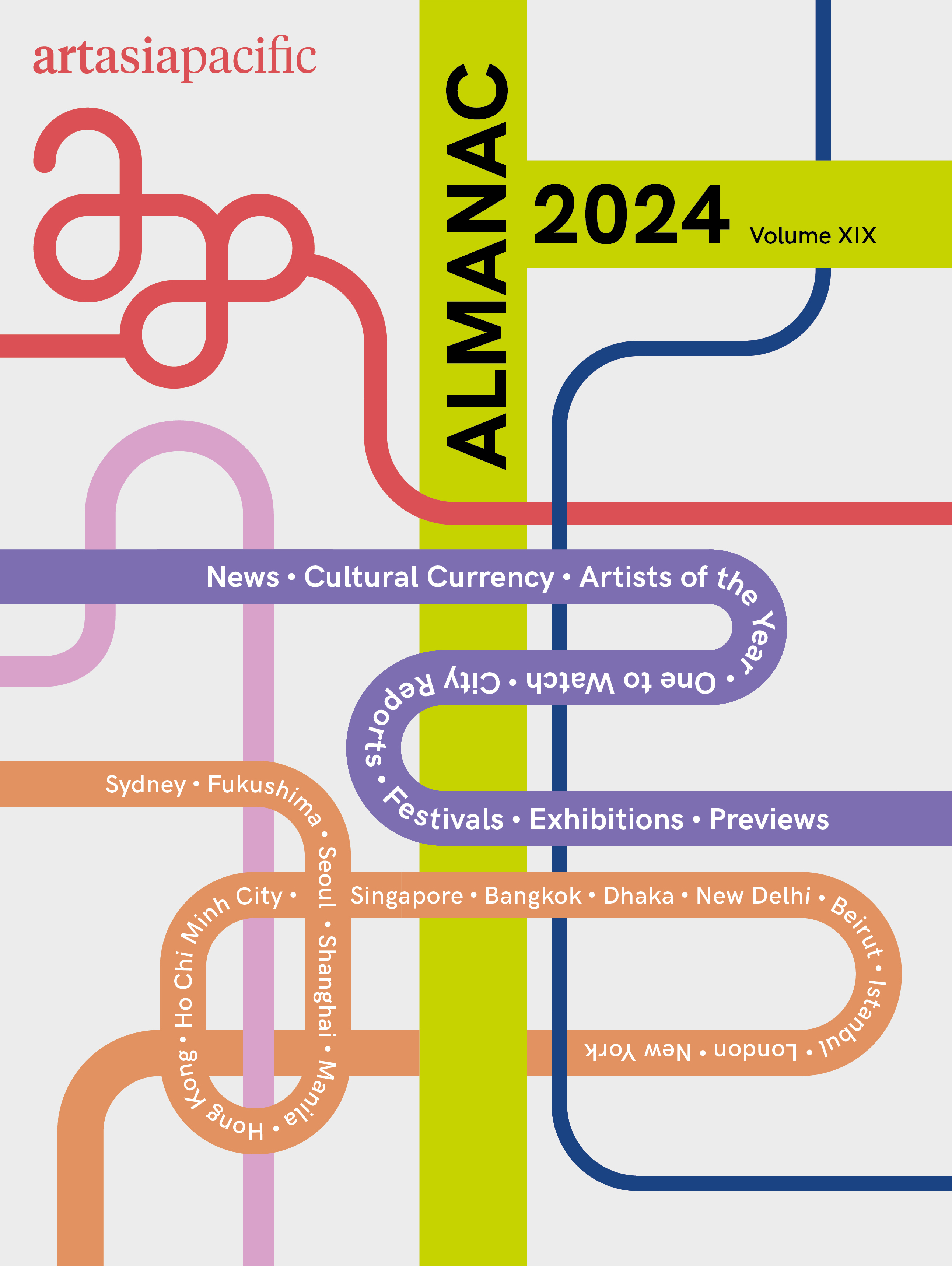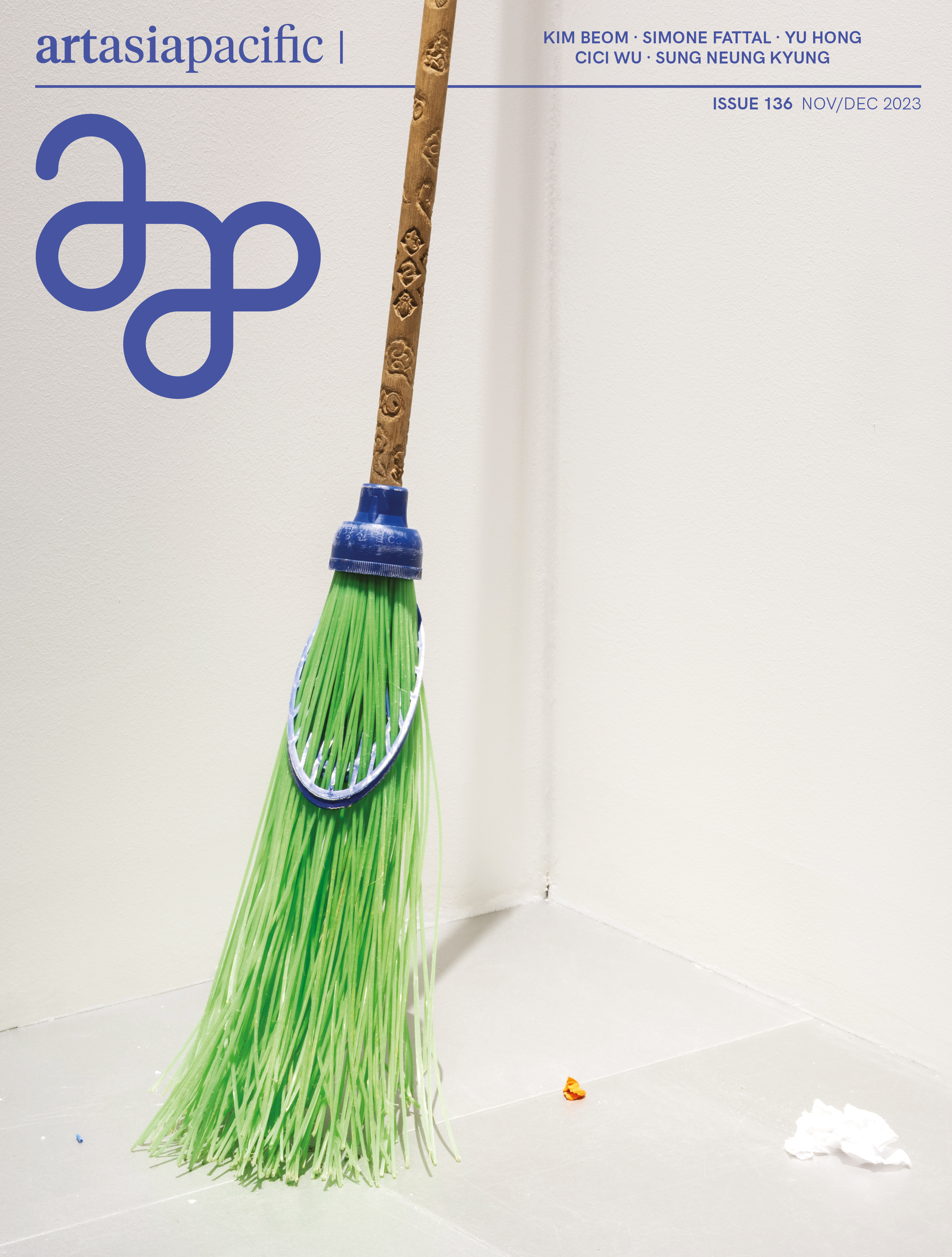Whether adopting pseudonyms, exaggerating personas, or inventing alter egos, artists have been leading imagined existences throughout time in order to examine the fine lines that divide fiction and reality. There are many para-fictional approaches to art-making today, and in our cultures at large, as hiding one’s identity can engender pluralistic and ambiguous forms of expression.
Beginning in 1967, the Los Angeles-based artist Carl Cheng began branding his creations under the name John Doe Co., a wryly generic corporate moniker for his “Nature Machines.” The company name placed the artist’s experiments into a dialogue with the rapid postwar technological developments happening in American industries while also deflecting attention away from his Chinese heritage amid rising anti-Asian sentiment during the American war in Vietnam. In this issue’s cover Feature, deputy editor HG Masters traces Cheng’s early awareness of how technology would recreate natural processes, leading to a world entirely shaped by humans.
Our second Feature brings us to Evelyn Taocheng Wang’s solo exhibition Reflection Paper at the Kunstverein für die Rheinlande und Westfalen in Düsseldorf, where Wang alludes to a host of artistic and literary figures in her paintings and videos. Delving into the artist’s explorations of identity construction and fictional biographies, contributor and curator Hendrik Folkerts writes: “in order to stage a perpetual (re)formation of identity through a process of narrative reciprocity, she projects onto these figures her own meditations on body politics, artistic labor, the Kafkaesque bureaucracies of immigration, and language.”
Rounding out the Features, Up Close highlights Jes Fan’s new sculptures commissioned for the 2021 Liverpool Biennial; Deniz Gül’s deconstructions of language at her SALT Galata exhibition in Istanbul; and Zhao Zhao’s new series of mixed-media paintings The Buddha (2021). For Inside Burger Collection, Kimberly Bradley traces the arc of artist Bianca Kennedy’s practice, from her films on bathing to her speculative animations.
For Profiles, writer Sheila Regan spoke to photographer Pao Houa Her about her connection with the Hmong community in Minneapolis, where she grew up, and her birth country, Laos. Elsewhere in the section, associate editor Ophelia Lai examines multimedia artist Aki Inomata’s interspecies collaborations, and managing editor Chloe Chu writes about how photographer Miti Ruangkritya tracks the dizzying transformations of Bangkok.
This issue’s Essay is focused on the project “Owned by Others,” which sought to create conversations around the colonial histories behind the artifacts held on Berlin’s Museum Island. Comprising performances, public installations, and showcases, “the encounters of ‘Owned by Others’ became instances of micro-resistance,” writes Berlin desk editor Clara Tang, that respond to how “newly diverse and remarkably retrograde histories were simultaneously re-inscribed into Berlin’s urban landscape in the year 2020.”
In Dispatch, curator Raphael Fonseca describes the recent shifts in the arts landscape of São Paulo, most notably the inclusion of more Afro-Brazilian artists and curators in the public programs of museums and galleries. For the Point, artist, curator, and incoming Asia Art Archive director Christopher K. Ho probes how transnational communities of the many Asian diasporas might find new forms of solidarity. Artist Trevor Shimizu pens the One on One column, declaring that “Dan Graham and [his show] Deep Comedy saved my art, and my life.”
Lastly, for Where I Work, contributor Frances Arnold visited aaajiao’s Berlin studio, where the new-media artist creates large-scale installations, websites, and interactive games reflecting on humanity’s relationship with virtual environments.
Whether it is through the 21st-century technologies that enable us to live double lives in the virtual worlds of the internet, or reflecting on the culturally unbounded personas that allow us to adapt ourselves to different places and people, artists expand the intersection of the imaginative and the real.
A digital edition of the full AAP 124 July/August issue is now available for purchase on Zinio, Google Play, iTunes, and Magzter.
